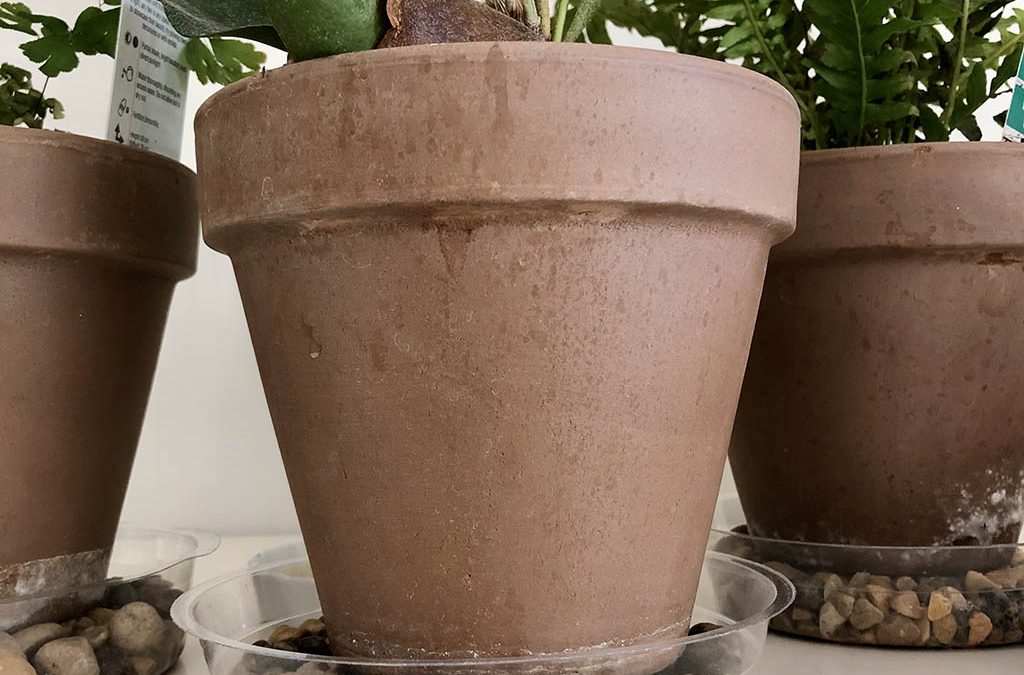Contents
- 1 How to Improve Indoor Plant Drainage (Beginner’s Guide)
- 2 Why Drainage Is Important for Indoor Plants
- 3 Signs Your Plant Has Poor Drainage
- 4 Ways to Improve Indoor Plant Drainage
- 5 Step-by-Step Guide to Repotting for Better Drainage
- 6 Extra Tips for Better Drainage
- 7 FAQs About Indoor Plant Drainage
- 8 Final Thoughts on Improving Indoor Plant Drainage
- 9 Related Articles
How to Improve Indoor Plant Drainage (Beginner’s Guide)
One of the most common reasons houseplants struggle is poor drainage. Without proper drainage, plant roots can sit in soggy soil, leading to root rot, yellowing leaves, and stunted growth. The good news is that improving indoor plant drainage is simple and can make a huge difference in your plant’s overall health. This guide will walk you through the basics of why drainage matters, how to spot poor drainage, and the best ways to fix it.
Why Drainage Is Important for Indoor Plants
- Prevents root rot: Excess water drains away instead of suffocating roots.
- Supports nutrient uptake: Healthy roots absorb water and nutrients better.
- Mimics natural conditions: Most plants naturally grow in well-draining soil outdoors.
- Reduces pests: Soggy soil attracts fungus gnats, mold, and other pests.
Good drainage is the foundation of indoor plant care and ensures long-term success.
Signs Your Plant Has Poor Drainage
- Yellowing or wilting leaves despite regular watering.
- Mushy or smelly soil indicating root problems.
- Roots visible on the surface or growing out of the pot.
- Fungus gnats hovering around the plant.
- Water pooling on the soil surface after watering.
- Plant growth slowing down even during active seasons.
Ways to Improve Indoor Plant Drainage
1. Choose the Right Pot
- Always select pots with drainage holes at the bottom.
- Avoid decorative pots without holes unless you use them as outer covers. Try this set of plant pots with drainage holes on Amazon.
2. Use Well-Draining Soil
- Mix standard potting soil with perlite, sand, or orchid bark.
- For succulents or cacti, use specialized cactus or succulent soil.
- Avoid compacted soil mixes that retain too much water.
3. Add a Drainage Layer
- Place small stones, gravel, or broken pottery pieces at the bottom of the pot.
- This prevents soil from blocking drainage holes and allows water to escape.
4. Water Properly
- Water thoroughly, then let excess water drain out completely.
- Always empty saucers or decorative outer pots to prevent standing water.
- Stick to a schedule that matches your plant’s natural needs.
5. Repot When Needed
- Over time, soil can compact and reduce drainage.
- Refresh with new potting mix every 1–2 years.
- Move plants into a slightly larger pot if they’ve become root-bound.
A repotting kit with tools makes the process easier and cleaner.
Step-by-Step Guide to Repotting for Better Drainage
- Choose a pot with adequate drainage holes.
- Place a thin layer of gravel or stones at the bottom.
- Prepare a well-draining potting mix suited for your plant type.
- Gently remove the plant from its old pot and loosen the roots.
- Place the plant in the new pot, filling in with fresh soil.
- Water thoroughly, allowing excess water to drain.
- Place the plant back in its ideal light location.
Extra Tips for Better Drainage
- Elevate pots slightly with pot feet or stands to help excess water escape.
- Use breathable materials like terracotta pots to reduce moisture buildup.
- Group plants with similar watering needs together.
- Rotate plants regularly so all sides get airflow and light.
- Avoid overwatering—always check soil moisture before adding more water.
FAQs About Indoor Plant Drainage
Q: Can I drill drainage holes into a pot that doesn’t have any?
A: Yes, use a ceramic or plastic-safe drill bit to carefully add holes at the bottom.
Q: Is gravel at the bottom of pots necessary?
A: It helps but isn’t a substitute for proper soil. Always use a well-draining mix.
Q: How do I improve drainage without changing pots?
A: Mix in perlite at the top of the soil or use a wick to draw excess water out.
Q: Do all indoor plants need drainage holes?
A: Yes—while some plants tolerate wetter conditions, almost all benefit from proper drainage.
Final Thoughts on Improving Indoor Plant Drainage
Proper drainage is one of the simplest yet most effective ways to keep indoor plants healthy. By using pots with holes, well-draining soil, and proper watering habits, you can prevent root rot and keep your plants thriving. Adding extra steps like repotting regularly and using breathable containers helps create the ideal environment for roots. Remember—healthy roots equal happy plants, and good drainage is the foundation of success.
Learn more about plant care basics from the RHS guide to houseplants.

